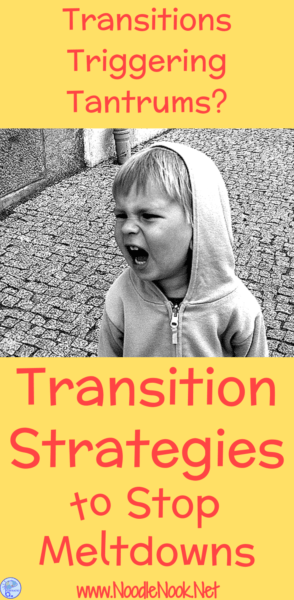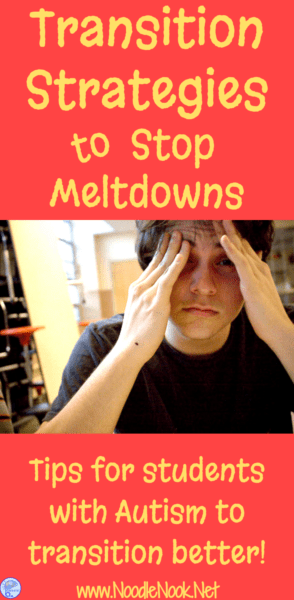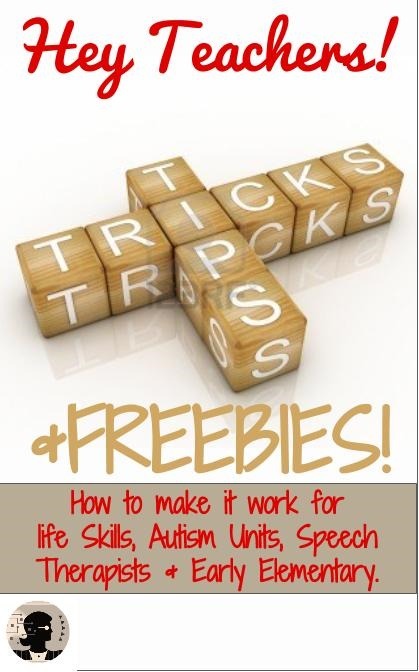Transition Strategies to Stop Meltdowns
Are you working with students who have Autism? Students with transition issues? Or just students period. Lots of different types of kids can struggle with having to transition from activity to activity. It is a very unstructured process that isn’t good for everyone. What can you do? Try these transitions strategies to stop meltdown when it’s time to move on.
[dt_gap height=”10″ /]
Give a Warning or Countdown
Transitions are hard… and not knowing when the transition is happening can make the transition that much worse. I have kids and can tell you from the depths of Chuck-E-Cheese hell- telling a kid how much time there is left and then sticking to that time (yeah, a minute means 60 seconds, not an hour) makes a big difference.
I have had people try this with me, telling me then need me right now. Sometimes I need to finish that sentence, send that email, or jot down that note before I can move on to something else. I, as an adult, need a warning that my time on my task is almost over.
Consider using a timer, a countdown, or warnings as the time on a task is coming to a close. It will make transition meltdowns less likely.
[dt_gap height=”10″ /]
Signal when Time is Over
Sometimes the sound of someone’s voice is enough to drive you over the edge, especially when that voice is saying “let’s go, let’s go, let’s go” over and over again. So many students with Autism already have sensory processing difficulties, The sound of your voice prattling on can exacerbate the transition difficulties.
Consider using a flicker of the overhead lights, a bell or some other chime or noise, or even a visual to signal when it’s time to end what we’re doing and transition to the next activity or move on to the next class. Using it consistently will make the process easier.
Be Sure a Student Knows What’s Next
My sister is not one for surprises, in fact she hates them. There is something about not knowing what’s coming that makes her feel off balance. For a lot of our students, that same anxiety is present as they transition through their day because they simply don’t know what’s next.
When it comes to transition strategies to stop meltdowns, it can be as easy as adding a visual schedule, referring to a classroom wide schedule, or simply telling a student what the next task or activity will be before the one they’re doing now ends. That way as they’re getting ready to prepare for a transition, they’ve already got it in their mind what they’re going to do next.
I love surprises, but even I cringe at the thought of walking into a situation where I have no idea what is going to be expected of me. Common courtesy requires us to be sure a student knows what’s next as they go through their day. If you’re looking for ways to incorporate a visual schedule into your classroom, check out this blog post as well this Printable and Ready to Go Visual Schedule.
Make The Transition Bearable
I was in a classroom a few years ago and the teacher was trying to get all the students to line up at the door to transition to Art. She had to go to several students and help them get their materials together and give them some support to transition.
It almost looked like she was herding cats. Just as two or three of the students would line up, one or the other would meander out of the line to find a way to entertain themselves. Needless to say, she had several behaviors during times of transition as well as just a hard time managing at all.
What she really needed to make things run better was something for those students to do while they were waiting for the transition to happen. In order to make that work, we had some students who would gather up supplies to take to the art classroom, some who were allowed to stand in line and get a specific fidget or transition toy (which they only got during the time of transition from the time they were lined up at the door until they were inside their next class).
We needed the transitions to be smoother, so the earlier steps became really important to get the line up process to run smoother. As she applied all the steps in this article, her transitions missed meltdowns.
[tweetthis]A Must Have List for Autism Unit Teachers about Transitions![/tweetthis]
Have Clear Expectations
The teacher I was speaking about earlier had no clear expectations. She didn’t even know what she wanted, so how could you expect the students to transition smoothly? Taking the time to really know what it is you want every student to do as you prepare for a transition, transition, and then start with the next activity means that not only will you know what the expectations are, but you’ll be better able to prepare your students.
Using a transition rule card or social story can make that happen. Check out the social stories in the NoodleNook store– they are so helpful in establishing appropriate behavior and also serve as a work system activity!
[dt_gap height=”10″ /]
Establish a Landing Routine
When the transition is over, it can be easy to trigger a meltdown because there is nothing to do in the new place. Be sure to have a sequence of steps or activities, like a warm up, to do when a student arrives in a new center, class, or environment.
Even if you are transitioning to a functional environment, like the bathroom, there are routines to follow, like washing hands or doing a grooming check. No matter what, there should be something- nothing breeds behaviors like boredom!
Include a Sensory Break
As I mentioned above, students with Autism often have sensory processing issues. The loud noises and movement (like in a school hallway or cafeteria) that surround a transition can be the trigger to a meltdown.
Be sure that you compensate for the overstimulation with a period, even if it is brief, to work through it. You may have a warm up that is quiet, or a sensory free area of your classroom where a student with Autism can transition to (with an activity to start working on right away) to balance out the sensory overload.
[dt_gap height=”10″ /]
Transition Strategies to Stop Meltdowns
Well- there you have it! Surefire steps to making transitions meltdown free. A lot of times student behaviors are not because of them, they are because of us. If you can go the extra mile to put these procedures in place, you will find that you’re paid out in spades or at least saved from the meltdown mayhem.





